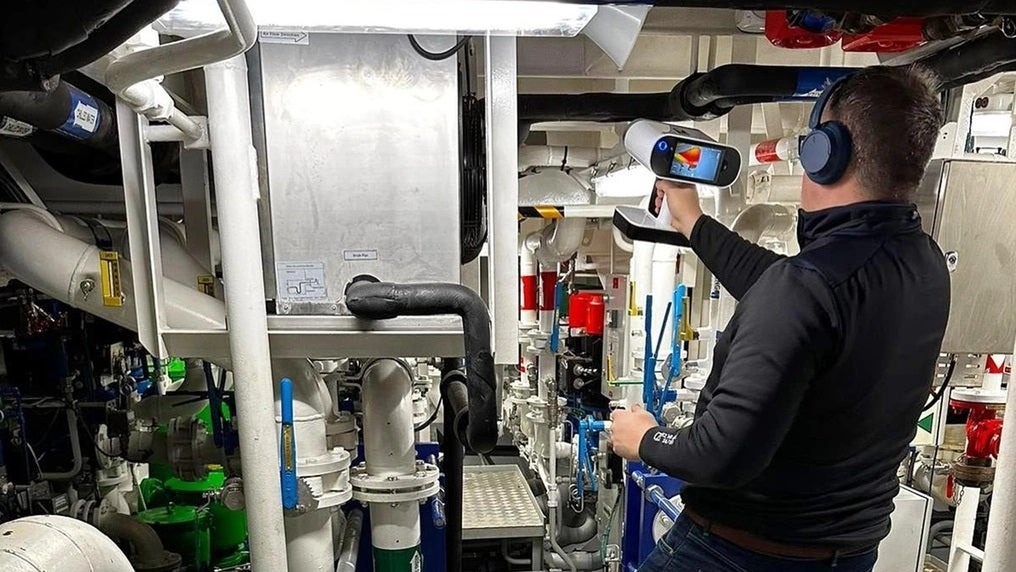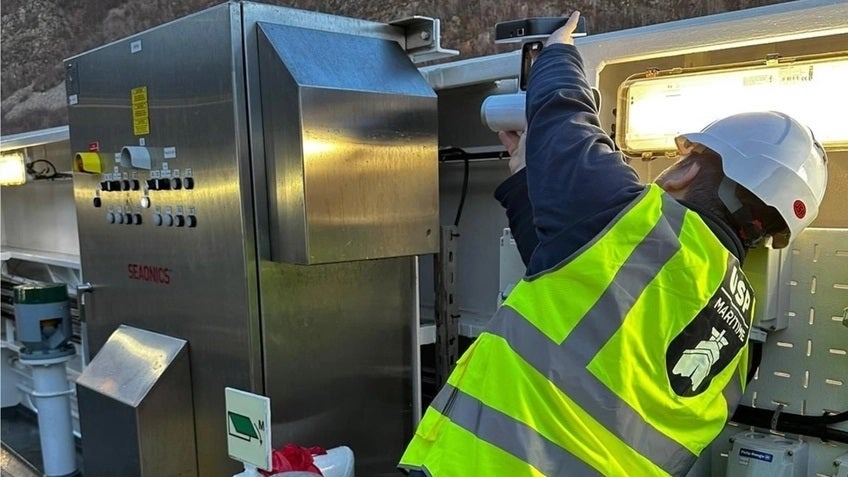Comment
Navigating maritime insurance using innovative 3D scanning
Vessel inspections don’t have to delay operations, says Artyom Yukhin, CEO at Artec 3D.

An Artec Leo 3D scanner being used to digitise an engine room with real-time data feedback. Credti: Artec 3D
Maintaining a ship’s condition is not just crucial for keeping vessels safe. It also boosts efficiency and helps secure and maintain insurance coverage. Marine insurance is essential for any damage or loss associated with cargo, vessels, and transportation of goods. However, challenges arise when insurers and shipowners alike must navigate a complex landscape of hull, machinery, and protection and indemnity (P&I) policies.
Insurers often require proof of proper maintenance and compliance with regulatory standards as a condition for coverage, ensuring that shipowners can protect themselves from financial risks associated with unforeseen incidents. Regular audits and documented maintenance help shipowners meet these insurance requirements and safeguard their investments.

Artyom Yukhin, CEO, Artec 3D
However, the task of inspecting a vessel thoroughly and documenting its condition is no small feat.
Traditional methods, such as using tapes, measuring lasers, and reference photos, are labour-intensive and time-consuming.
Not only does this approach demand a significant amount of manual effort, but it also risks missing critical warning signs that could lead to costly issues down the line.
In addition, vessel inspections rely on a vessel being in port, taking valuable time out of maintaining operations. Balancing the need for detailed inspections to meet insurance policies with maximising operations and efficiency is a constant battle and needs a simple solution.
Handheld scanning technology
Technology can save the day when it comes to efficiency but often requires extensive training or investment. Advanced 3D scanning technology transforms this process.
USP Maritime, a leading naval service provider, recently partnered with Artec 3D to revolutionise how they capture vessel inspections and maintenance documentation.
Specifically, USP Maritime has integrated Artec Studio and the Artec Leo 3D scanner into their workflow, a handheld 3D scanner that offers rapid and accurate data capture. Unlike traditional methods, which can be cumbersome and inefficient, 3D scanning allows for quick and detailed scanning of large builds, such as a 16-meter crane, and their intricate components.
With built-in batteries and real-time data display, a 3D scanner enables USP Maritime to digitise entire vessels in minutes rather than hours. It can also be given to someone to use without previous experience and minimal training.

Handheld 3D scanners allow for data capture in the tightest of confined spaces. Credit: Artec 3D
Once the data has been captured, the Artec Studio software digitises the data instantly, transforming the scanned areas into 3D images to either local or remote systems to be accessed by remote members of the team.
USP Marine’s old workflow was also hampered by cumbersome file sizes, but the team is now able to remove excess frames with Artec Studio scan decimation. This makes meshes easier to handle in software like Autodesk Inventor, where they perform further CAD analyses.
By capturing detailed 3D models of ship components and machinery, USP Maritime can create comprehensive records that can serve as evidence of proper maintenance. This level of documentation is invaluable for both internal quality assessments, and when preparing for insurance audits or claims.
In broader applications, this means that when shipowners need to make repairs or modifications, USP Maritime can quickly provide precise measurements and detailed models with 3D scanning. This approach ensures that any work done is accurately documented, helping shipowners meet their insurance requirements and avoid potential disputes or coverage issues.
Maximising operations with 3D scanning
The integration of 3D scanning technology can allow insurers to access detailed datasets for risk assessment and compliance verification. This innovation aligns with broader trends in the maritime insurance industry, where data management tools and machine learning algorithms are increasingly used to analyse historical data and predict future risks.
As the maritime industry continues to evolve, the role of advanced technology in managing insurance and maintenance processes will only grow. The successful integration of tools such as 3D scanners highlights the importance of embracing innovation to maximise operations, efficiency and safety. It’s not just for insurance, but for ongoing routine maintenance, too.
With the ability to capture and document vessel conditions with unprecedented accuracy and speed, this technology not only supports effective maintenance practices but also reinforces a broader goal of securing and sustaining insurance coverage in a competitive industry.